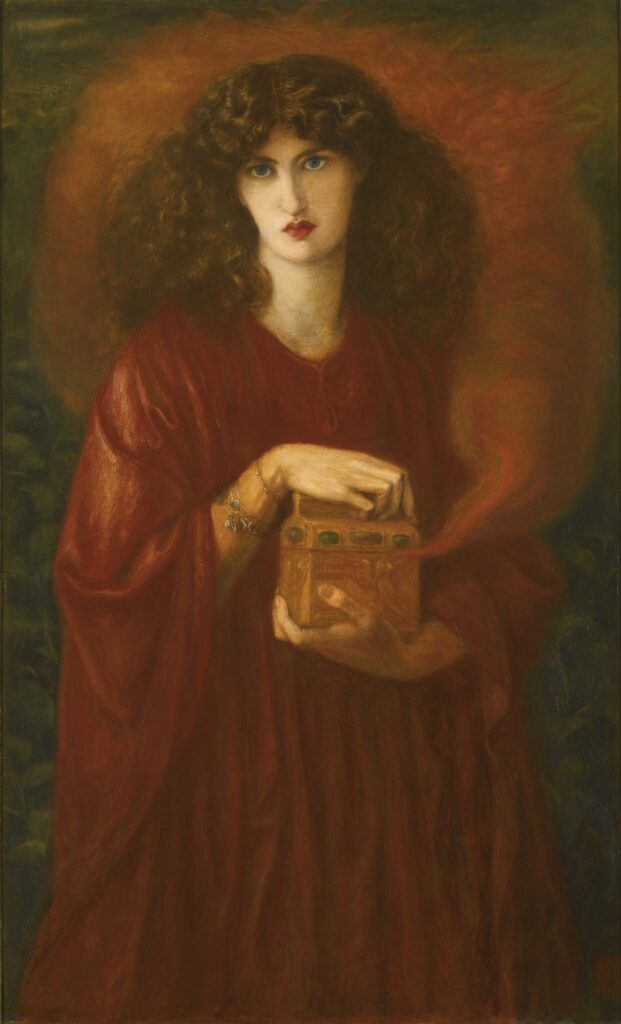
Pandora is a painting made by Dante Gabriel Rossetti in 1871, which depicts the mythological figure of Pandora holding the box that contains all the evils of the world. Rossetti was an English painter and poet, founder of the Pre-Raphaelite movement, who sought to renew art by drawing inspiration from medieval and Renaissance sources.
The historical context of the work
Rossetti painted Pandora at the end of his life, when he was going through a difficult period, marked by the death of his wife Elizabeth Siddal in 1862, his addiction to chloral and his depression. He then took refuge in artistic creation and developed a more sensual and mysterious style, influenced by symbolism and aestheticism.
Pandora is one of Rossetti’s last works, which was commissioned by John Graham, a Scottish collector, for 750 guineas. The painting was exhibited for the first time in Glasgow in 1872, then in London in 1883, after the artist’s death. It then changed hands several times before being acquired by the Faringdon Collection Trust, which currently preserves it at Buscot Park.
The interpretation of the work
Pandora is a work that illustrates the theme of the femme fatale, dear to Rossetti and his time. The femme fatale is a seductive and dangerous figure, who attracts men by her beauty and sensuality, but who also causes them misery and suffering. She is often associated with mythological or literary characters, such as Pandora, Lilith, Salome or Cleopatra.
In Greek mythology, Pandora is the first woman created by the gods to punish men for stealing fire from Prometheus. She receives as a gift a mysterious box that she must not open, but that she yields to curiosity. By opening it, she releases all the evils of the world: disease, old age, war, death… Only hope remains at the bottom of the box.
Rossetti represents Pandora at the moment when she is about to open the box, which he has made a casket adorned with precious stones. He gives her the features of Jane Morris, his model and mistress, whom he often painted as an incarnation of ideal beauty. He accentuates her melancholic and dreamy expression, which contrasts with the fatal gesture that she is going to accomplish. He also gives her an elegant posture and a sumptuous dress, which underline her refinement and wealth.
The painting is dominated by dark and warm colors, which create an intimate and oppressive atmosphere. The background is composed of a red curtain and a dark blue wall. There is an inscription in Latin: “Nescitur ignescitur”, which means “One does not know what burns”. It is a quotation from Ovid, taken from the Metamorphoses , which refers to the fire stolen by Prometheus. Rossetti thus plays on the double meaning of fire: symbol of progress and civilization for men, but also source of destruction and curse.
Pandora is therefore a work that expresses both Rossetti’s fascination and anguish towards women and their powers. He mixes ancient myth and modern romanticism to create a strong and symbolic image, which challenges the spectator on the fate of humanity.
